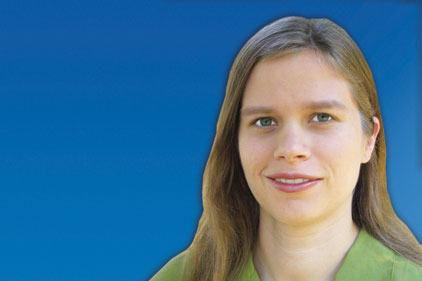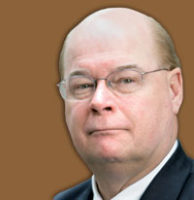Leading in Crisis: A global security leader shares his experiences and strategies during the protests in Egypt


|
| Jim Hutton |
When protests began in Egypt in January, local and multi-national organizations were faced with complex decisions on how to handle operations and security under the potential of escalating violence and political change. Consumer products giant Procter & Gamble closed its two plants outside Cairo and one general office in the city on January 26. (All three facilities re-opened in February.) The Security Executive Council interviewed Jim Hutton, Director of Global Security for Procter & Gamble and a Council Tier 1 Security Leader, to talk about the experience.
SEC: Clearly you monitor the political situation in any country where you have a facility. What methods do you use in normal times to accomplish that?
JH: One of our key focus areas is to improve our external awareness. We need a capability to watch the world and hopefully protect against or pre-empt bad things coming our way. So we have built a Watch Officer Group here at headquarters that has global responsibility to track political, military, terrorism and crime trends. So as we see things happening, we can alert our regional resources and bring a coordinated response. I used to be a Watch Officer at the State Department, so we’ve tried to mimic that approach on a different scale.
SEC: At what point did you begin to have concerns that this was evolving into a major uprising?
JH: One of the keys for us was our regional leader, Mark Caldwell. He was formerly with the Diplomatic Security Service, and he has worked in a number of embassies, so he’s very experienced in seeing the tripwires in terms of civilian and military behavior—those signs of escalation or deterioration in the local situation. We quickly engaged with our local management team to look at a couple of indicators of problems – Is the internet still available? What are the fuel shortages like? – things that suggest hoarding or government artificial control of certain parts of daily life in Cairo.
SEC: Do you have hard and fast triggers for closure?
JH: We do have triggers. Some of them are clearer than others. At our command center here in Cincinnati we have embedded in some software many of our key locations around the world, and we use a vendor called NC4 that tracks the situation around the key sites. If we see things like transportation or infrastructure impacts, mass movements of people, power outages – these would be some of our tripwires. A number of P&G people also have reporting responsibilities to help add context to what’s going on. So it’s a combination of local and international resources to help paint the picture for our decision makers.
SEC: One you saw the signs of a major event, how did that change your strategy?
JH: At P&G we have a two-part crisis strategy. First, we decide which function will handle the response. If it’s a crisis related to our brand or corporate reputation, our External Relations group handles that. If it’s related to people and assets, that’s global security’s. Once that decision is made, we employ a crisis management framework that uses a technique called PACE. This is basically about decision rights, and it can help things move quickly and stay aligned as we address the myriad facets of a crisis.
The P in PACE stands for the process owner, a single person who’s responsible for managing the operational aspects of the crisis team. In P&G, that is typically the local HR leader. The A is the approver, another single person who’s completely accountable. So if it’s a factory, it could be the plant manager, or it could be the country or general manager if more than one site is impacted. C means contributors, people who have a technical knowledge or expertise to guide the decision makers. These could be people from security, medical, health environment and safety, supply chain – all the subject matter experts. And the E is executors, people who take action in their area of expertise, like legal, finance, and quality assurance, who would give us real-time, high-quality subject matter inputs that would help the process owners and the approvers to manage the crisis. This is a relatively new model that P&G has developed over the last two or three years, and it’s really serving us well. Obviously in Cairo, the P would clearly defer to my regional manager, even though he’s in a C role. A lot of people have asked why security is not the process owner. Well, there are more aspects to crisis management than just security, and we need to respect that equity.
SEC: What specific challenges did your regional team have to overcome?
JH: Mark Caldwell, my regional manager, managed this from Dubai; he wasn’t even on the ground. He’s evacuated thousands of people, including those from several embassies and private-sector organizations during his career, so he was the perfect person to divide up the work within his team to help support the folks on the ground in Egypt. At some point we did have a security contractor engaged on the ground to execute on our behalf, but I think it’s really interesting how Mark was able to do this remotely. You’d swear he was on the ground by the timeliness and quality of his inputs.
The team did a great job. The hardest work wasn’t headquarters driven; it was done in the field. All the processes and systems we spent so much time and training on really came together well.
SEC: Do the facilities affected have a mix between Egyptian and non-Egyptian employees?
JH: Yes. Typically we have some ex-pats or third country nationals who might be doing development assignments, highly technical roles, or general management. And obviously we have some local Egyptian employees as well as some contractors.
SEC: What did you do to care for your local and ex-pat employees during the crisis?
JH: We did work with an evacuation provider to get our ex-pats out, because we saw some things early on that really concerned us regarding that population. We were also deeply concerned with taking care of our local employees. We have an automated system that broadcasts messages, so we sent constant updates. We made significant interventions to make sure people had cash. We even researched the possibility of importing halal-appropriate MREs. We wound up not having to do that. But that’s the level of care for our local Egyptian family members that we wanted to undertake. So health and welfare checks were very important for us.
SEC: How was the decision made to re-open?
JH: We looked again at the local situation and asked questions like, Are those tripwires improving? Is the infrastructure in place? Are the roads passable? What’s the status of the curfew? Is the transport system open as far as the ability to move workers, raw material, and finished goods? What kind of guidance are we getting from local authorities in terms of freedom of movement? What is the local crime situation? We needed to look again at those kinds of tripwires to make sure they were back in a good place.
SEC: Have you learned anything from this experience that you can translate to future events?
JH: When the government or any entity impacts the communication chain—when the Internet and phones go down—a lot of the process we rely on goes down as well. We even started using runners going door to door to stay connected with our employees. So you can’t be overly reliant on technology even though it provides scale and speed. It can’t be a standalone solution. And we had a number of workarounds to address that.
One new tool we used successfully: Our command center launched Twitter and Facebook accounts so that if our employees did manage to get to an open connection they could send us messages to ask for assistance or simply to get reassurance that there was someone they could contact if they needed help. That’s a new development in our crisis management toolkit.
About the Author:
Marleah Blades is senior editor for the Security Executive Council, an innovative problem-solving research and services organization. To learn about becoming involved, e-mail contact@secleader.com or visit www.securityexecutivecouncil.com/?sourceCode=secmag.
Looking for a reprint of this article?
From high-res PDFs to custom plaques, order your copy today!





